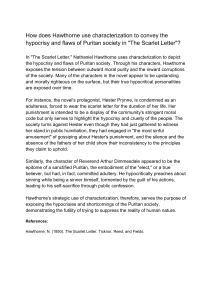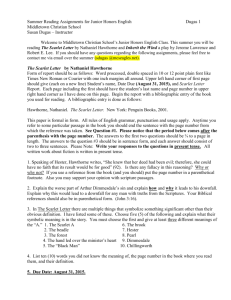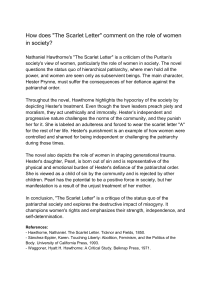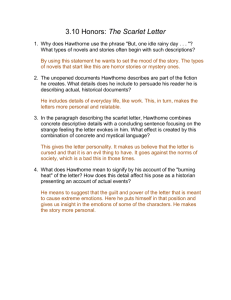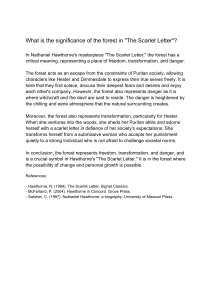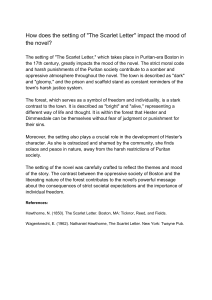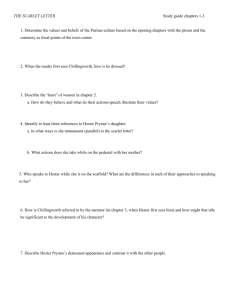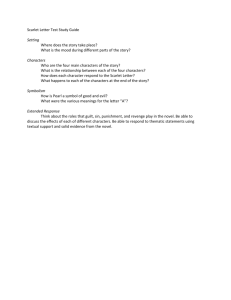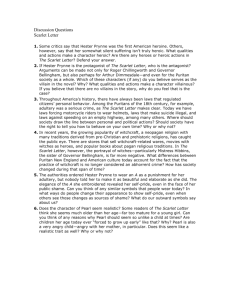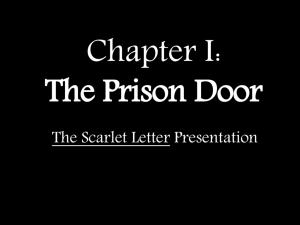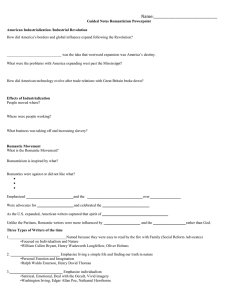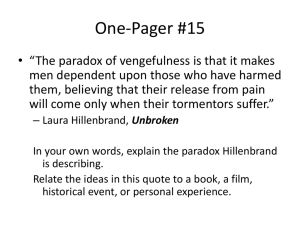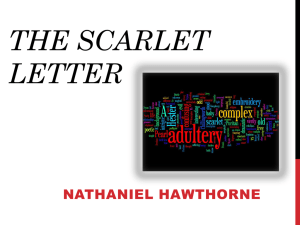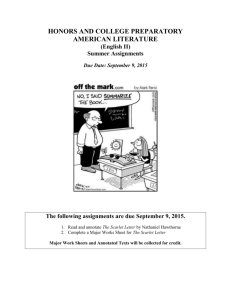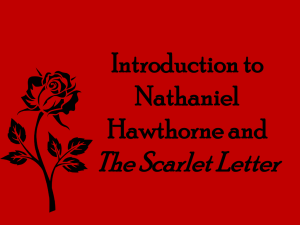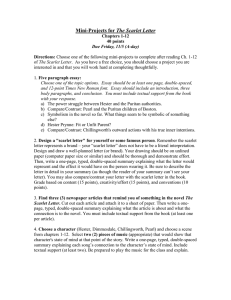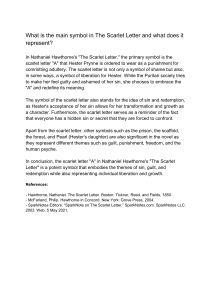Name: Period: ______ The Scarlet Letter Chapters 5
advertisement
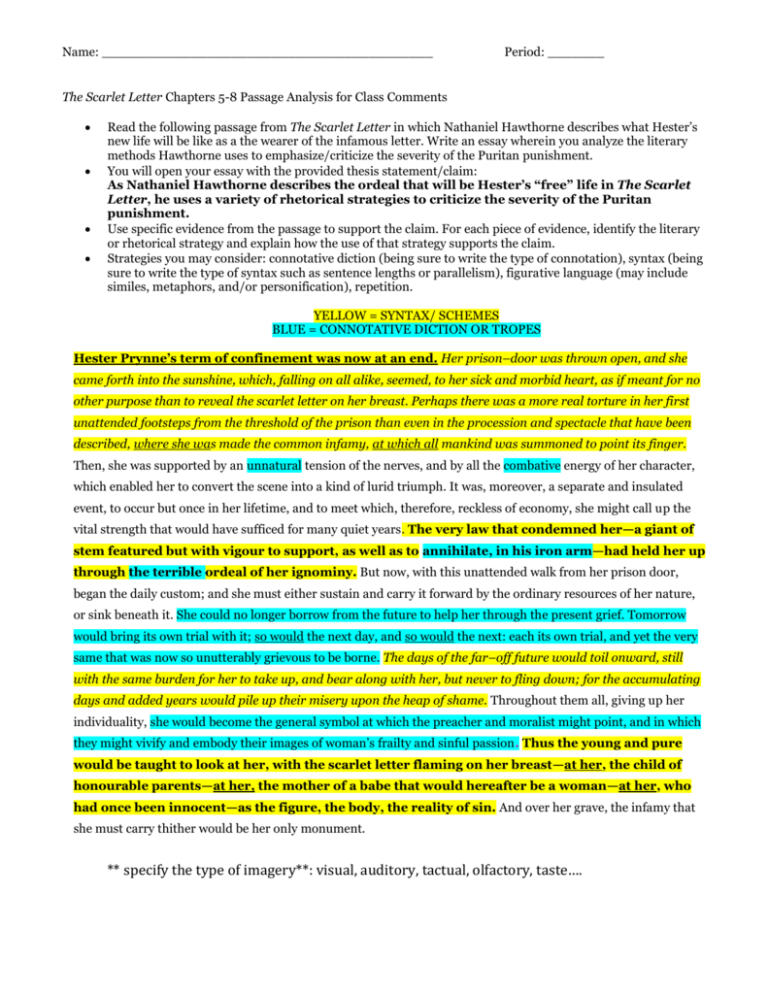
Name: _________________________________________ Period: _______ The Scarlet Letter Chapters 5-8 Passage Analysis for Class Comments Read the following passage from The Scarlet Letter in which Nathaniel Hawthorne describes what Hester’s new life will be like as a the wearer of the infamous letter. Write an essay wherein you analyze the literary methods Hawthorne uses to emphasize/criticize the severity of the Puritan punishment. You will open your essay with the provided thesis statement/claim: As Nathaniel Hawthorne describes the ordeal that will be Hester’s “free” life in The Scarlet Letter, he uses a variety of rhetorical strategies to criticize the severity of the Puritan punishment. Use specific evidence from the passage to support the claim. For each piece of evidence, identify the literary or rhetorical strategy and explain how the use of that strategy supports the claim. Strategies you may consider: connotative diction (being sure to write the type of connotation), syntax (being sure to write the type of syntax such as sentence lengths or parallelism), figurative language (may include similes, metaphors, and/or personification), repetition. YELLOW = SYNTAX/ SCHEMES BLUE = CONNOTATIVE DICTION OR TROPES Hester Prynne’s term of confinement was now at an end. Her prison–door was thrown open, and she came forth into the sunshine, which, falling on all alike, seemed, to her sick and morbid heart, as if meant for no other purpose than to reveal the scarlet letter on her breast. Perhaps there was a more real torture in her first unattended footsteps from the threshold of the prison than even in the procession and spectacle that have been described, where she was made the common infamy, at which all mankind was summoned to point its finger. Then, she was supported by an unnatural tension of the nerves, and by all the combative energy of her character, which enabled her to convert the scene into a kind of lurid triumph. It was, moreover, a separate and insulated event, to occur but once in her lifetime, and to meet which, therefore, reckless of economy, she might call up the vital strength that would have sufficed for many quiet years. The very law that condemned her—a giant of stem featured but with vigour to support, as well as to annihilate, in his iron arm—had held her up through the terrible ordeal of her ignominy. But now, with this unattended walk from her prison door, began the daily custom; and she must either sustain and carry it forward by the ordinary resources of her nature, or sink beneath it. She could no longer borrow from the future to help her through the present grief. Tomorrow would bring its own trial with it; so would the next day, and so would the next: each its own trial, and yet the very same that was now so unutterably grievous to be borne. The days of the far–off future would toil onward, still with the same burden for her to take up, and bear along with her, but never to fling down; for the accumulating days and added years would pile up their misery upon the heap of shame. Throughout them all, giving up her individuality, she would become the general symbol at which the preacher and moralist might point, and in which they might vivify and embody their images of woman’s frailty and sinful passion. Thus the young and pure would be taught to look at her, with the scarlet letter flaming on her breast—at her, the child of honourable parents—at her, the mother of a babe that would hereafter be a woman—at her, who had once been innocent—as the figure, the body, the reality of sin. And over her grave, the infamy that she must carry thither would be her only monument. ** specify the type of imagery**: visual, auditory, tactual, olfactory, taste….

